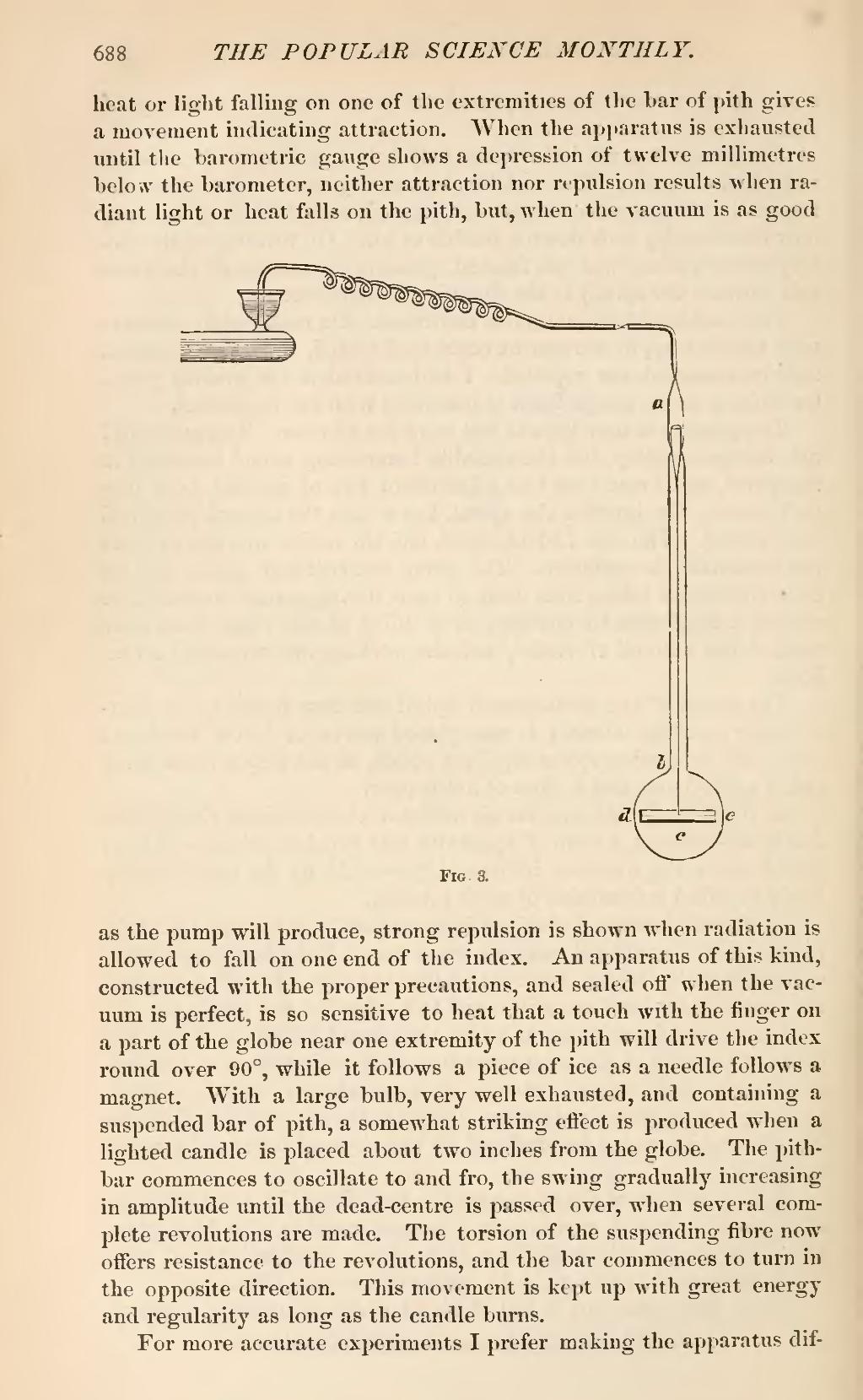heat or light falling on one of the extremities of the bar of pith gives a movement indicating attraction. When the apparatus is exhausted until the barometric gauge shows a depression of twelve millimetres below the barometer, neither attraction nor repulsion results when radiant light or heat falls on the pith, but, when the vacuum is as good

Fig. 3.
as the pump will produce, strong repulsion is shown when radiation is allowed to fall on one end of the index. An apparatus of this kind, constructed with the proper precautions, and sealed off when the vacuum is perfect, is so sensitive to heat that a touch with the finger on a part of the globe near one extremity of the pith will drive the index round over 90, while it follows a piece of ice as a needle follows a magnet. With a large bulb, very well exhausted, and containing a suspended bar of pith, a somewhat striking effect is produced when a lighted candle is placed about two inches from the globe. The pith-bar commences to oscillate to and fro, the swing gradually increasing in amplitude until the dead-centre is passed over, when several complete revolutions are made. The torsion of the suspending fibre now otters resistance to the revolutions, and the bar commences to turn in the opposite direction. This movement is kept up with great energy and regularity as long as the candle burns.
For more accurate experiments I prefer making the apparatus dif-

